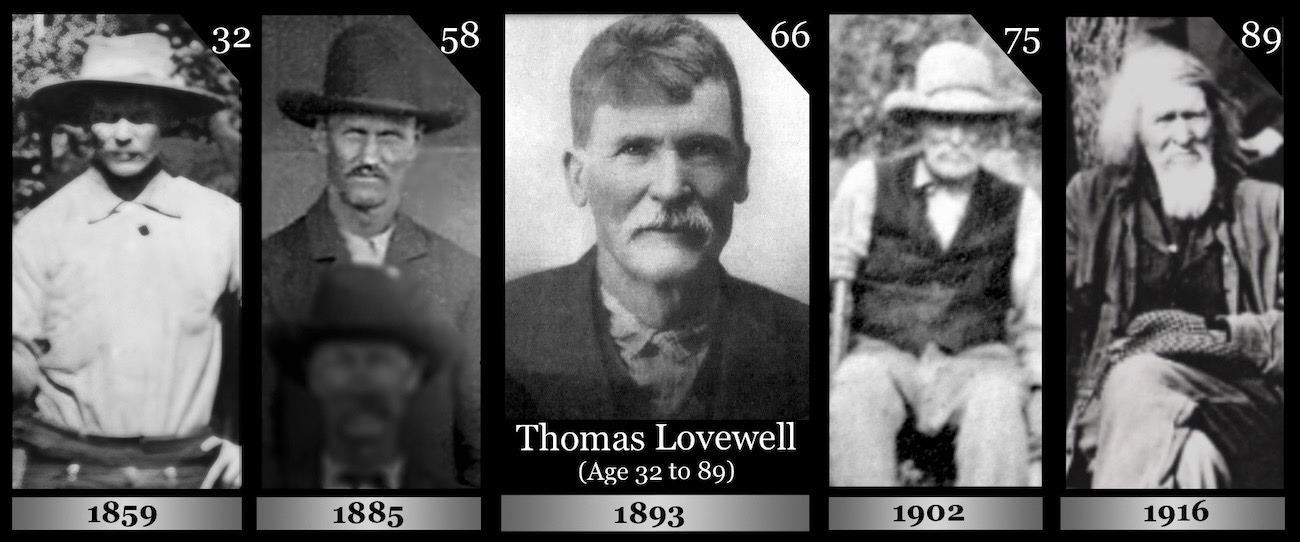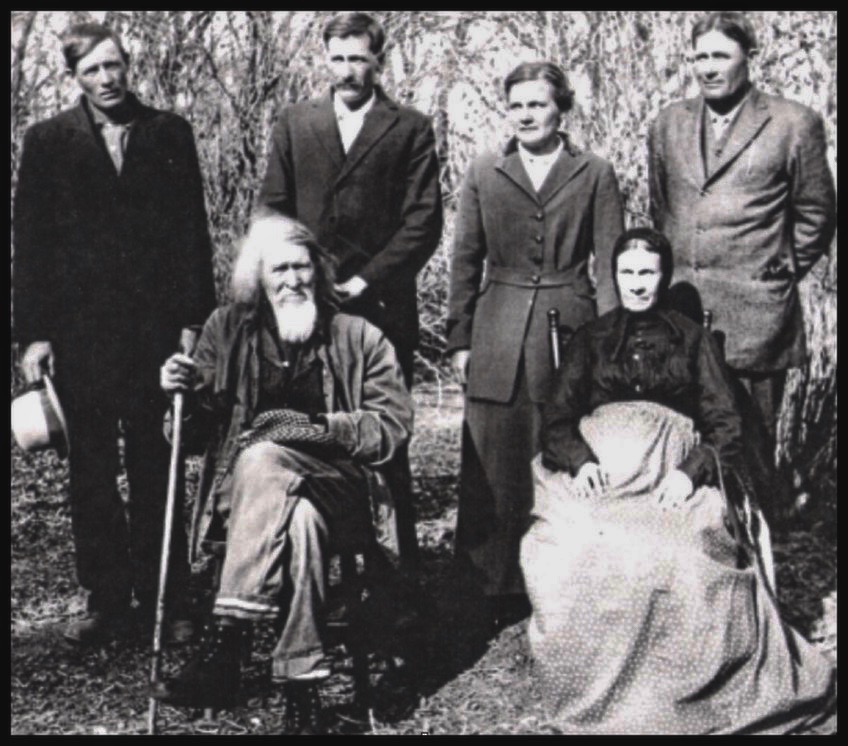At the end a YouTube video I made six years ago, I appended a series of known or presumed photos of Thomas Lovewell taken over a span of 57 years. I stand by almost everything I published in the video, except for nudging a couple of dates by a year or two. Presented below is the updated collage, as amended after further research, with the probable year the picture taken listed at the bottom of each, and Thomas’s age at the time displayed in the upper right corner.

The first actual photographic likeness I ever saw of the family patriarch was a miniature image which had been heavily augmented by an artist’s pencil. It may have been the only illustration in an early edition of Ellen Morlan Warren’s book White Rock Historical Sketches on the shelves of the Kansas History Center in Topeka. Several months later I found larger halftone reproductions of the same photo accompanying vintage newspaper items celebrating Lovewell’s 89th birthday and announcing his death at the age of 93. The photo was a detail of the double-portrait at the top of this page featuring Thomas with his daughter Julany after their reunion in 1893.
Without those halftones I never would have recognized the face gravely peering out at me from the portico of a public building in a grainy photograph on Ancestry.com. The photo had been posted by Richard A. Davis, CPA, a great-great-grandson of Daniel Nelson Davis, brother of Orel Jane Lovewell. After I contacted Mr. Davis he kindly sent me several sepia-toned copies of the original, which had been gathering dust for years on a filing cabinet in his office.
I made several guesses about the occasion for the photo-shoot (all of them wrong) until discovering a news item stating that Thomas Lovewell was one of three guests from White Rock to attend the July 1885 meeting of the Republic G.A.R. chapter, in which Daniel Davis was a member.
If not for the G.A.R. picture I never would have spotted Thomas (or his doppelganger) among a small group of men gathered near Pikes Peak with Daniel Chessman Oakes and his business partner. Various prospectors and teamsters are arrayed around a wagon painted to advertise Oakes’s “Guide to the Gold Fields” in August of 1859.
The 1859 picture is the only one in the group without a solid provenance, except for the striking resemblance and the fact that Thomas was known to have been in the vicinity Pikes Peak at that time, just before striking camp to join his brothers in California. Seeking out the author of the famous guidebook also sounds like something he would have done.
The 1902 snapshot was probably taken by Thomas’s daughter Mary as her father was about to head out for another appointment, this time to meet his cousin Prof. Joseph Taplin Lovewell in Topeka, to iron out details concerning their shared family history. The picture was provided by Dale Ann Johnson who, if I’m calculating correctly, is Mary Julina (Lovewell) Stofer’s great-great-granddaughter.
The final known picture of Mr. Lovewell was taken by Wray the Face-Maker from Courtland, after hurrying to Lovewell in time to see Thomas and Orel Jane celebrate their 50th wedding anniversary, surrounded by their sons, William Frank, Stephen, and Grant, one daughter, Mary, several grandchildren, and other well-wishers. At least two pictures were taken that day, one with all the attendees (see the previous entry, “Eye of the Beholder”), in which Thomas sits in their midst bolt upright, a king on his throne with a rumpled hat for a crown, brandishing his walking stick as if it were a royal scepter.
The final view of him shown in the montage is from the second picture taken on April 1, 1916, a monarch in repose reflecting on his reign. Beside him a relaxed Orel Jane almost seems capable of summoning a winning smile, if she really put her mind to it.
